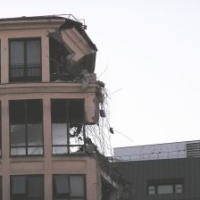Big Data Changing How We Combat Disasters

Sometimes it seems like we have more data than we know what to do with. The millions upon millions of devices that collect, store, and use different tidbits of data might not always lead to quality solutions for the different problems we face, but our response to the recent Nepalese earthquake indicates that some of this data is being put to good use.
Hundreds of emergency services, charities, agencies, and eager volunteers came to aid the people affected by this natural disaster, and it was mobile devices, satellites, and social media that played such a big part in bringing both information and people together.
Of course, we can’t take all this data we’ve collected over time, mash it together in our hands like a toddler eating peas, and stop hurricanes from happening. But, we can more easily predict these natural disasters, prepare for what’s to come, respond in kind, and do a better job recovering from the damage.
According to Forbes, several companies, such as Terra Seismic, use real-time monitoring of satellite data and specific environmental factors to predict earthquakes anywhere in the world with 90 percent accuracy. Without big data, our predictions could be considered little more than guesses.
It was the massive 6.7 magnitude earthquake beneath the San Fernando Valley twenty years ago that brought along the Southern California Earthquake Center, which blends the region’s seismographic network and the data gathered over time to create a clearer picture of the different geographic risks in Southern California.
Companies of all shapes and sizes see the competitive advantages of big data. You can store transactional information in a digital form, narrow your customer segmentation for more precise, tailored services, and maintain richer analytics used to decrease risk and increase your change of success. But beyond basic business value, big data can save lives.
During Hurricane Sandy, FEMA used more than 150,000 different geotagged photos, which were snapped by Civil Air Patrol, to get as clear a picture of the damage as possible. That was almost three years ago. With the strides we’ve taken in such a short amount of time and the Internet of Things expanding, big data will only play a more prominent role in how we deal with incidents that were once completely out of our hands.
Big data might have a big impact now, but the possibilities are nearly endless for what we can do in the future.

